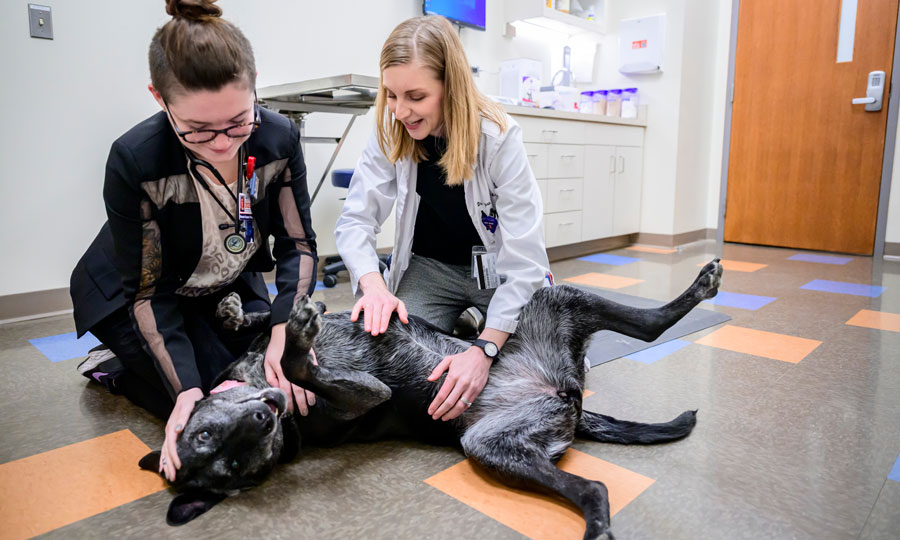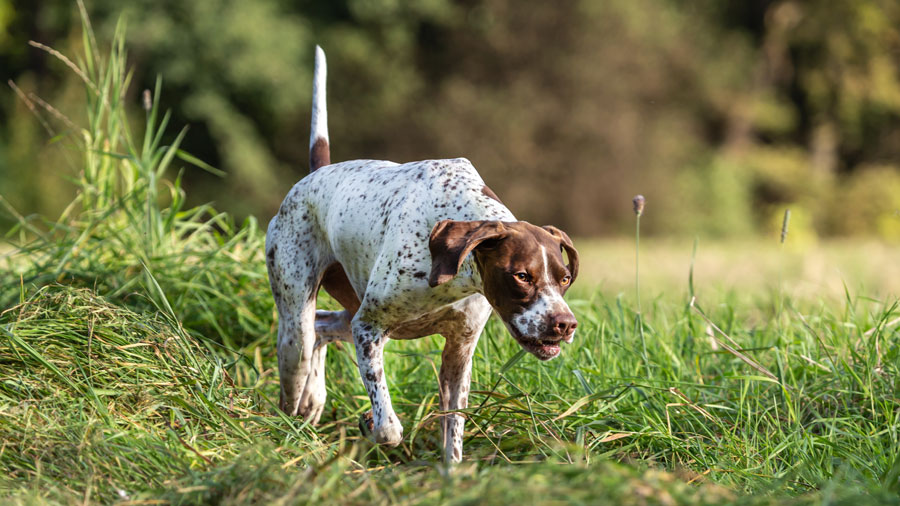Monitor pets’ comfort level in the cold
Just because your pet sports a fur coat doesn’t mean he’s protected from all the potential hazards of winter. Dr. Gary Brummet, a primary care clinician at the University of Illinois Veterinary Teaching Hospital in Urbana, advises pet owners to stay attuned to their pet’s behavior to keep the pet comfortable in cold weather.
“Thick-coated breeds may love it outside and willingly stay out for extended periods,” says Dr. Brummet, “but, especially if you have a small, short-coated dog, watch for shivering. Also, watch to see if your dog comes when called; reluctance to move may be a sign of being too cold.”
Cold Weather Protection
What about all the doggie winter gear on the market? What is for show, and what is really necessary?
“If you like to take your dog on long walks for an hour or more, simple boots and coats can be great, especially in breeds without much body fat or fur, such as greyhounds,” he says. “However, if it is bitter cold, you may want to limit your outdoor activities to thirty minutes regardless of clothing.”
According to Dr. Brummet, a good rule of thumb is: “If it’s too cold for you, it’s probably too cold for your pet.”
Although the best option is to allow your pets to live indoors, if you have an outdoor dog you must ensure that he has access to water. You may need to check several times a day to see that the water is not frozen.
“Outside dogs also need good shelter that isn’t too big,” says Dr. Brummet. “Small spaces will hold heat. The shelter should be out of the wind, should have a small door that your dog can get in, and should be just large enough for the dog to stand, sit, lie down, and turn around comfortably.
“But keep an eye on the thermometer, and consider bringing the pet into a garage or other insulated or heated structure when temperatures drop well below freezing.”
Cold Cat Concerns
Cats, too, are best kept in the house. Barn cats or neighborhood strays that can’t or don’t want to be brought inside need access to a safe shelter out of the cold.
“They are really good at finding shelter themselves. Unfortunately, sometimes this is in the underside of a warm car,” Dr. Brummet warns.
Take care to make noise and check for cats before you start your engine and drive away in winter.
“If you have indoor cats that insist on going outside, watch for them and make sure you are available to let them back in,” Dr. Brummet recommends. Odds are they may change their minds fairly quickly.
Post-Walk Paw-wiping
Salt and deicer on sidewalks pose another type of winter hazard. Dr. Brummet says pets occasionally licking these substances from their paws is of little concern, but if they get into a large amount or start acting strangely, a call to your veterinarian is in order.
“When you get home from your outing, wipe your pet’s paws off with warm water, because salt and deicer on sidewalks can be irritating. However, you don’t need to apply topical medications or lotions, because dogs generally will just lick this off,” he says.
Another thing to keep in mind is that indoor dogs may actually shed during cold weather. Furnace heat is very low humidity, which can increase dry skin and shedding.
“Try not to bathe them more than necessary, and use conditioner instead of soap to help moisturize the skin,” Dr. Brummet says.
The bottom line is to stay in tune with pets’ comfort level in cold weather. They will let you know what they need and what they don’t like.
If you have questions about pets and cold weather, ask your local veterinarian.
By Hannah Beers

![[cute puppy wearing winter hat]](https://vetmed.illinois.edu/wp-content/uploads/2021/04/pc-cold-brummet.jpg)


